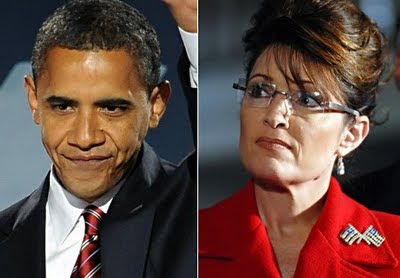
Given that we’re spending billions of stimulus dollars to rebuild our highways, it makes sense to think about what we’ll be driving on them. For years to come, most of what we drive will be powered, at least in part, by diesel fuel gasoline. To fuel that driving, we need access to oil. The less use we make of our own reserves, the more we will have to import, which leads to a number of harmful consequences. That means we need to drill here and drill now.
We rely on petroleum for much more than just powering our vehicles: It is essential in everything from jet fuel to petrochemicals, plastics to fertilizers, pesticides to pharmaceuticals. According to the Energy Information Administration, our total domestic petroleum consumption last year was 19.5 million barrels per day (bpd). Motor gasoline and diesel fuel accounted for less than 13 million bpd of that. Meanwhile, we produced only 4.95 million bpd of domestic crude. In other words, even if we ran all our vehicles on something else (which won’t happen anytime soon), we would still have to depend on imported oil. And we’ll continue that dependence until we develop our own oil resources to their fullest extent.
Those who oppose domestic drilling are motivated primarily by environmental considerations, but many of the countries we’re forced to import from have few if any environmental-protection laws, and those that do exist often go unenforced. In effect, American environmentalists are preventing responsible development here at home while supporting irresponsible development overseas.
My home state of Alaska shows how it’s possible to be both pro-environment and pro-resource-development. Alaskans would never support anything that endangered our pristine air, clean water, and abundant wildlife (which, among other things, provides many of us with our livelihood). The state’s government has made safeguarding resources a priority; when I was governor, for instance, we created a petroleum-systems-integrity office to monitor our oil and gas infrastructure for any potential environmental risks.
Alaska also shows how oil drilling is thoroughly compatible with energy conservation and renewable-energy development. Over 20 percent of Alaska’s electricity currently comes from renewable sources, and as governor I put forward a long-term plan to increase that figure to 50 percent by 2025. Alaska’s comprehensive plan identifies renewable options across the state that can help rural villages transition away from expensive diesel-generated electricity — allowing each community to choose the solution that best fits its needs. That’s important in any energy plan: Tempting as they may be to central planners, top-down, one-size-fits-all solutions are recipes for failure.
For the same reason, the federal government shouldn’t push a single, universal approach to alternative-powered vehicles. Electric cars might work in Los Angeles, but they don’t work in Alaska, where you can drive hundreds of miles without seeing many people, let alone many electrical sockets. And while electric and hybrid cars have their advantages, producing the electricity to power them still requires an energy source. For the sake of the environment, that energy should be generated from the cleanest source available.
Natural gas is one promising clean alternative. It contains fewer pollutants than other fossil fuels, it’s easier to collect and process, and it is found throughout our country. In Alaska, we’re developing the largest private-sector energy project in history — a 3,000-mile, $40 billion pipeline to transport hundreds of trillions of cubic feet of natural gas to markets across the United States. Onshore and offshore natural gas from Alaska and the Lower 48 can satisfy a large part of our energy needs for decades, bringing us closer to energy independence. Whether we use it to power natural-gas cars or to run natural-gas power plants that charge electric cars — or ideally for both — natural gas can act as a clean “bridge fuel” to a future when more renewable sources are available.
In addition to drilling, we need to build new refineries. America currently has roughly 150 refineries, down from over 300 in the 1970s. Due mainly to environmental regulations, we haven’t built a major new refinery since 1976, though our oil consumption has increased significantly since then. That’s no way to secure our energy supply. The post-Katrina jump in gas prices proved that we can’t leave ourselves at the mercy of a hurricane that knocks a few refineries out of commission.
Building an energy-independent America will mean a real economic stimulus. It will mean American jobs that can never be shipped overseas. Think about how much of our trade deficit is fueled by the oil we import — sometimes as much as half of the total. Through this massive transfer of wealth, we lose hundreds of billions of dollars a year that could be invested in our economy. Instead it goes to foreign countries, including some repressive regimes that use it to fund activities that threaten our security.
Reliance on foreign sources of energy weakens America. When a riot breaks out in an OPEC nation, or a developing country talks about nationalizing its oil industry, or a petro-dictator threatens to cut off exports, the probability is great that the price of oil will shoot up. Even in friendly nations, business and financial decisions made for local reasons can destabilize America’s energy market, since the price we pay for foreign oil is subject to rising and falling exchange rates. Decreasing our dependence on foreign sources of energy will reduce the impact of world events on our economy.
In the end, energy independence is not just about the environment or the economy. It’s about freedom and confidence. It’s about building a more secure and peaceful America, an America in which our energy needs will not be subject to the whims of nature, currency speculators, or madmen in possession of vast oil reserves.
Alternative sources of energy are part of the answer, but only part. There’s no getting around the fact that we still need to “drill, baby, drill!” And if those in D.C. say otherwise, we need to tell them: “Yes, we can Drill!”
- Sarah Palin
Full Article At:
























